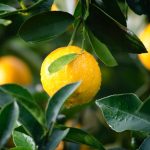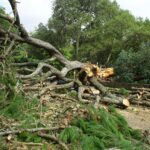At a glance:
- What is tree pruning
- Benefits of tree pruning
- Methods of tree pruning
Tree pruning refers to cutting branches or twigs from a tree to achieve a specific shape and improve the tree’s health by removing parts of the tree that are damaged or diseased. The practice of pruning is common in tree care and is often necessary for a tree to maintain its overall health and appearance. Additionally, branches that cross over one another are removed if they interfere with the growth of the plant.
Tree pruning methods that you should know when caring for trees
You can benefit from several tree pruning methods if you want to improve the health and appearance of your trees. Likewise, the following are some of the key benefits of tree pruning:
Improved tree health:
Getting rid of dead and diseased branches can help prevent the spread of disease and improve the health of the tree. Further, pruning can increase the amount of sunlight and airflow reaching the canopy of the tree, which can stimulate growth and make the tree more vigorous.
Increased safety:
As a general rule, removing damaged branches and branches growing in a dangerous direction can help reduce the risk of property damage or injury to people.
Improved landscape appearance:
Tree pruning can shape and control a tree’s size, making it fit in a particular space or landscape. A tree taken care of in this manner can help enhance the appearance of your property as well as the tree.
Increased tree lifespan:
A tree’s lifespan can be extended by removing damaged or diseased parts and promoting healthy growth with proper pruning.
Increased property value:
It is possible to enhance the appearance and increase the value of your property by maintaining well-maintained trees.
Methods of tree pruning
Crown lifting:
The crown lifting of a tree is the selective removal of the lower branches of the tree and the trimming of the foliage at the same time. By doing this, the crown of the tree is raised, and clear space is gained from ground level.
Tree crown lifting is generally performed during the late summer months when trees are still in full leaf. By bearing their full weight, the tree branches will be at their lowest level, which allows the arborist to determine better how much lift will be required to create the necessary space below.
Crown Thinning:
The purpose of crown thinning is to reduce tree density by removing smaller/weaker limbs and any branches that are crossing, rubbing, damaged or dead. As a result, the tree canopy opens up, allowing more air and light to penetrate the branches and leaves below. It also lightens the load on larger components, reducing the risk of them breaking off during a spring thunderstorm.
Crown Reduction:
This involves reducing the overall size of the tree by removing branches from the top and sides. This is often done to control the tree’s size or reduce wind resistance.
There are many reasons why trees need to have their crowns reduced, including the following:
- Reduce the weight of a dangerous tree
- If a tree is too shady or may damage a building
- Preventing trees from growing into power lines
Crown reductions work best in the winter or early spring while trees are still dormant before the sap starts rising.
Dead pruning/ Deadwooding:
It is the process of removing dead or diseased branches from a tree. This is a common practice in tree care and is often necessary to maintain the overall health and appearance of a tree.
Tree-dead pruning is especially important in urban areas to reduce the risk of branches falling on pedestrians or cars parked and passing by. Schools, colleges, local parks, and other public places should also be included.
Pollarding
When pollarding, branches are dramatically cut back from a tree, leaving the trunk supporting between 3 to 5 much-reduced branches. The tree looks nearly bare until fresh twiggy growth appears at the ends. The pollarding process begins when your trees are young and continues at regular intervals throughout their lives. For most trees, late winter to early spring is the best time to pollard, but there are always exceptions.
Crown restoration
Crown restoration involves pruning damaged or vandalised trees in order to restore the tree’s original appearance. There is a variety of processes that are followed while crown restoration depending on the type of damage and the species of tree.
The role of a property owner includes a lot of different responsibilities when it comes to proper tree maintenance. Even though the appropriate way to maintain trees is through pruning, that is only the beginning; the next step is whether to seal or not to seal tree branches. More information about this can be found here.
Are your trees in need of tree pruning?
You can use one or more of the above tree pruning methods individually or in combination, depending on what results you want. To keep your trees healthy and beautiful while enhancing the safety and beauty of your landscape, hire a professional and affordable tree service provider in Melbourne: Same Day Tree Works. They also offer tree services like tree removal, branch removal, tree lopping, hedge trimming, and stump removal.
You can encourage your trees to grow naturally by hiring these professional arborists. Their goal is to help you!





